The great wildebeest migration – a potted history
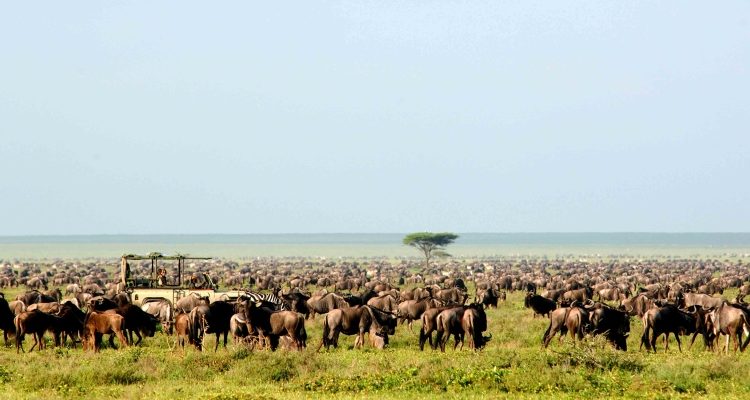
Wildlife migrations are often ancient patterns of movement, and always driven by seasonal variations in climate and food supply. One of the oldest and most significant in East Africa was that of wildebeest moving from Amboseli to Nairobi National Park, now stifled by development along the southern edge of Nairobi NP.
The migration of wildebeest and zebra through the Serengeti ecosystem is one of the best known on the planet, and it’s natural to assume that it has also been occurring for uncounted millennia. The reality is more nuanced, and it’s a much more dynamic situation that one might expect. Human interference has also played a significant part in its development.
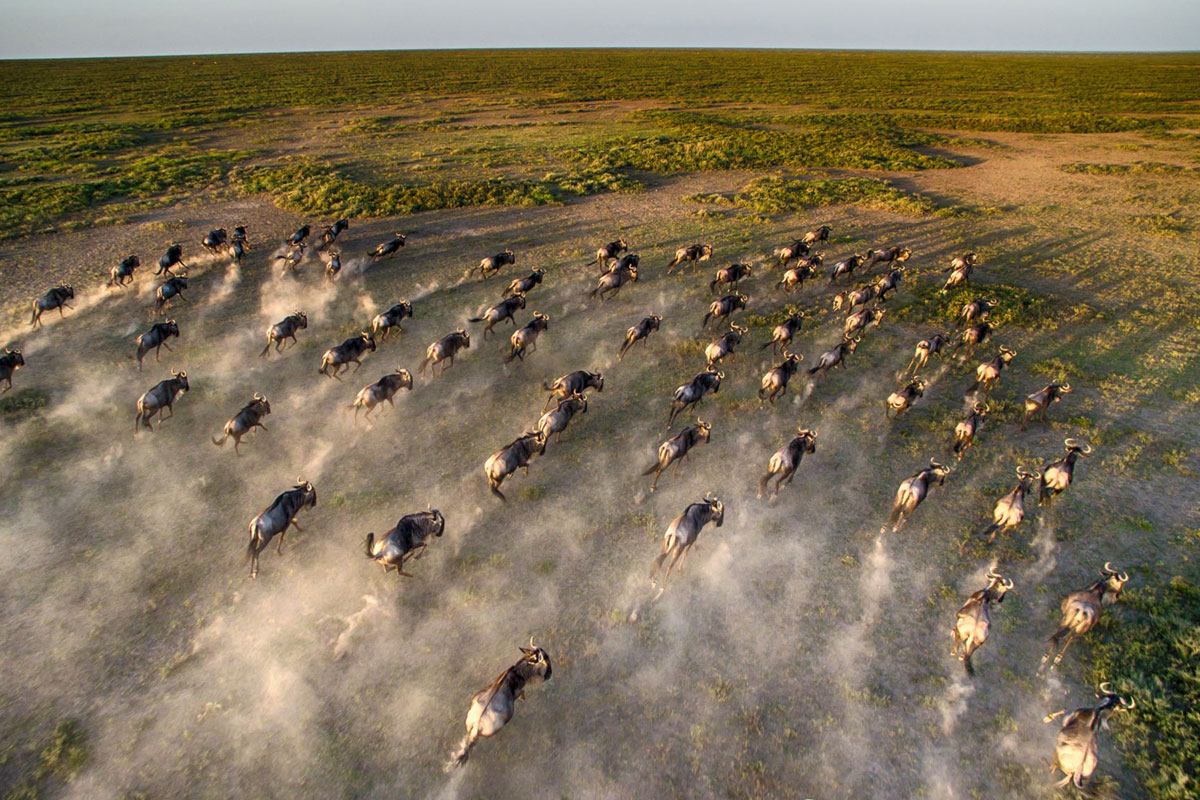
The wildebeest migration crossing the plains close to Serengeti Under Canvas
Until the early 20th Century, lions were the keystone species in the huge expanse of savannah between the Ngorongoro Highlands and Lake Victoria that we call the Serengeti. There weren’t many humans living here due to the tsetse flies in the woodland and those who did were hunter gatherers like the Hadzabe and Ndorobo. As recently as 150 years ago, there were no Masai living on the plains; it was too hard a place for domestic livestock, and the few Masai seen by Oscar Baumann and Joseph Thomson during their travels across the region in the 1880s were on the edge of starvation.
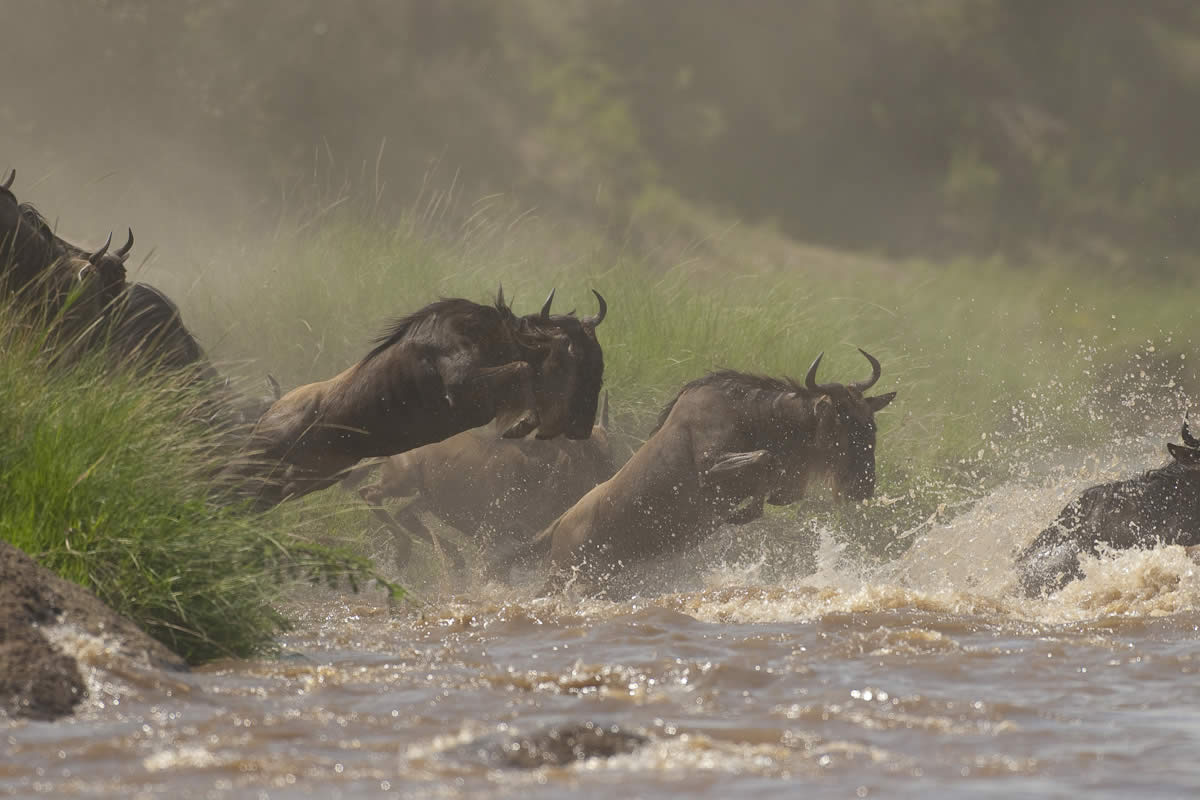
Taking the plunge across the Mara River. Offbeat Mara Camp
The generally abundant food supply for grazers and browsers meant the wildlife was certainly plentiful, with the large lion population keeping the herbivore numbers in check. However, none of the explorers or ivory traders who traversed the region during this time ever mentioned vast herds such as those seen today. Elephants were also numerous in the 1800s but were wiped out by ivory hunters by the early 1900s, but have recovered to about 7,000 now.
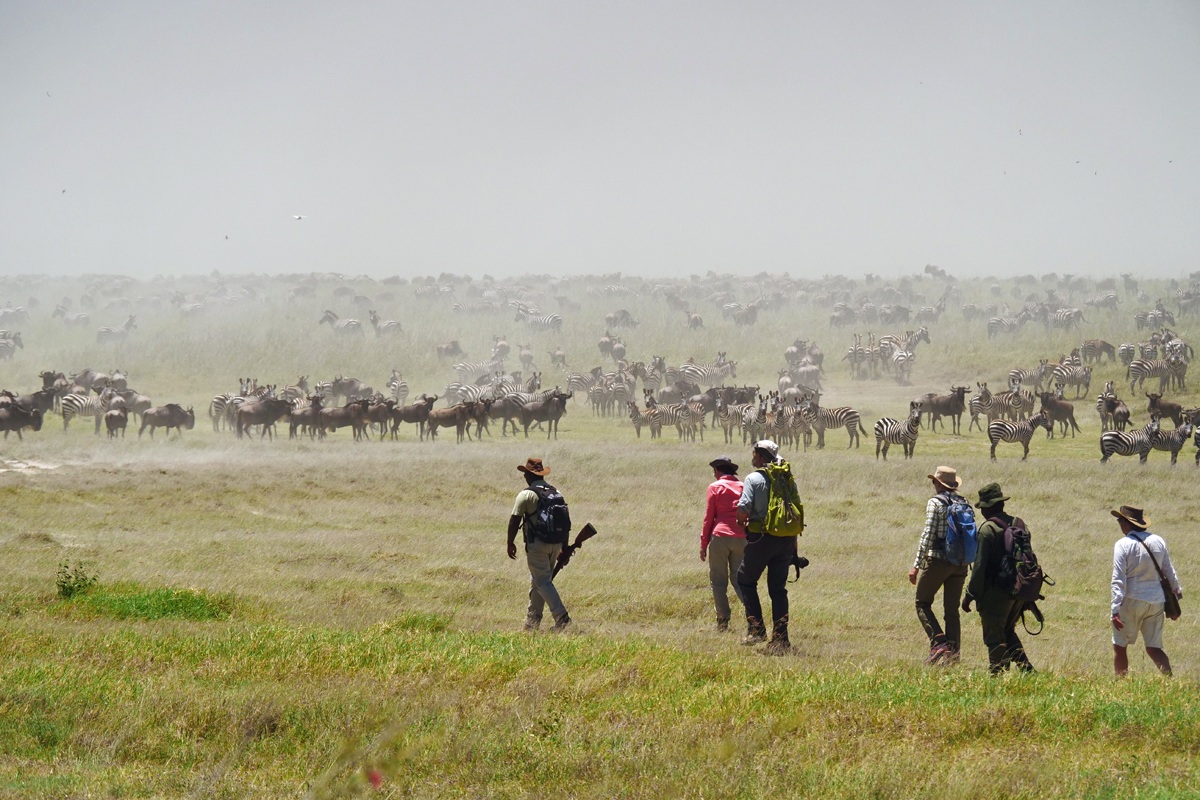
These days it’s possible to walk with the migration as it crosses the plains. Wayo Africa
During the 1920s, thousands of lions were killed by safari hunters, especially in the Seronera valley in the central Serengeti. Denis Finch Hatton and Julian Huxley persuaded the authorities to proclaim a game reserve in 1930 to protect the remaining lion population, which currently numbers around 3,000. The original reserve extended mainly along the Western Corridor from Seronera to Lake Victoria.
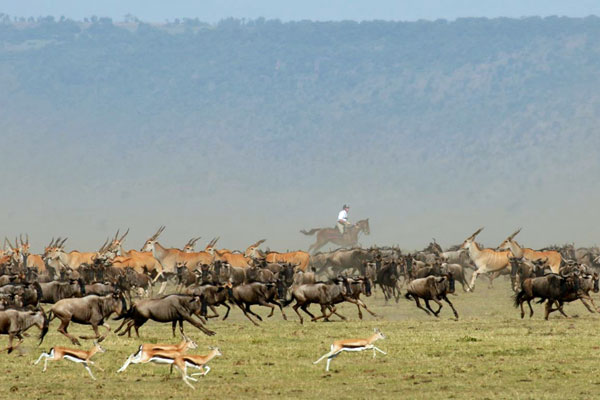
Experienced riders can enjoy the migration action from horseback. Offbeat Riding Safaris
Rinderpest, a viral disease that affects ruminant herd animals, swept across Africa during 1889, killing about 95% of affected animals, including many in the Serengeti. Despite this, and partly thanks to the depleted lion population, wildebeest numbers gradually increased through the 1900s, stabilising at about 1.4 million wildebeest and 600,000 others such as zebra and gazelles during the 1970s. The now famous migration began during the 1960s as the wildebeest numbers grew and they started to need to search for food through the year. A herd of this size needs 4,500 tons of food per day, so has to keep moving. Their preference would be to spend the whole year on the southern plains between Naabi Hill and the Ngorongoro Highlands, but as this is in the rain shadow of the Highlands it cannot sustain them for more than a couple of months around calving time.
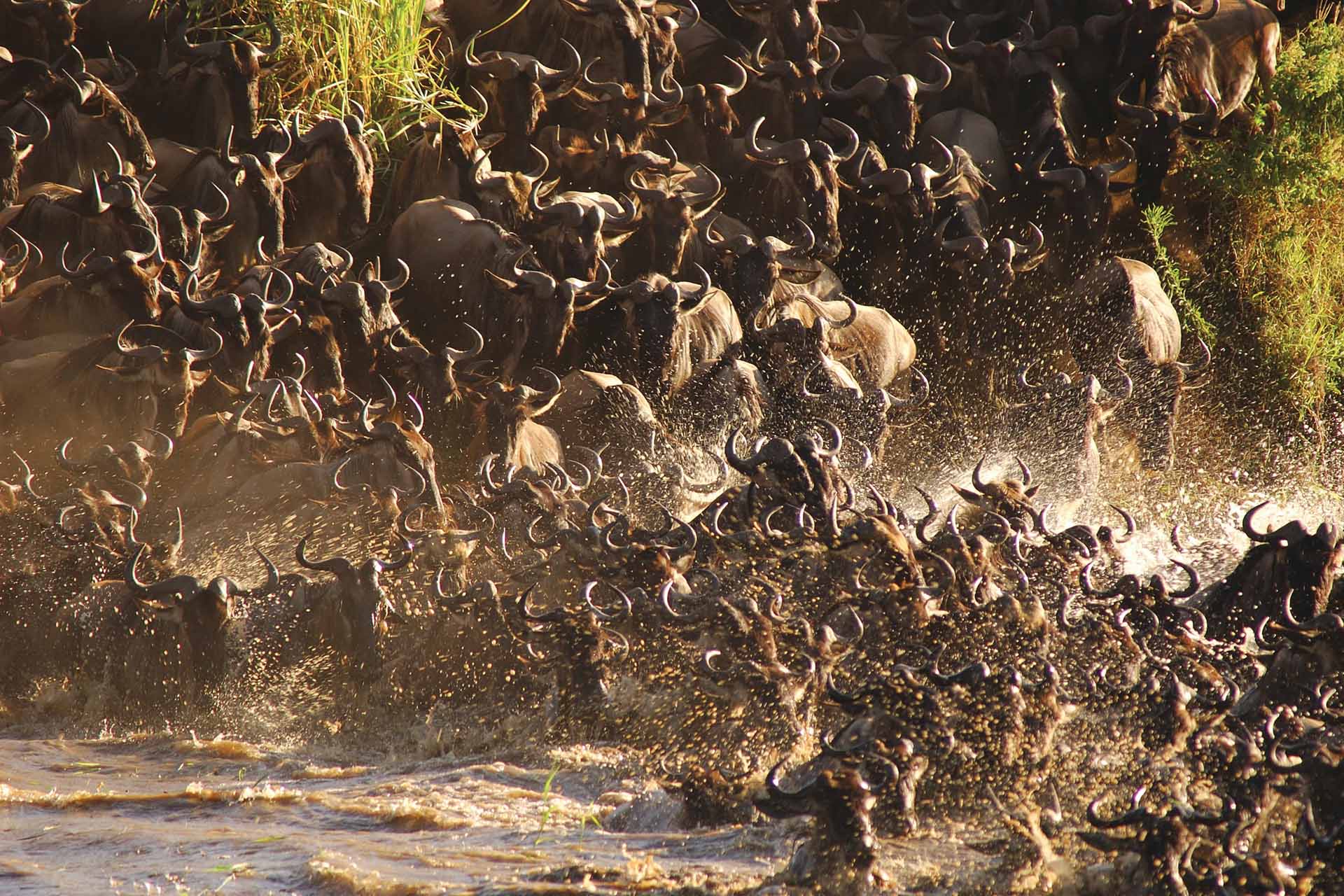
Watching wildebeest thunder towards a river crossing is an experience unlike any other. Ubuntu Camp
The Serengeti is now one of the few ecosystems on the planet which is improving year by year, with biodiversity and carrying capacity increasing bit by bit. Because the migration is so big, very little grass is left to burn in the seasonal fires that sweep the plains, making them less intense and allowing tree seedlings to survive, so the acacia woodland is expanding. Acacia savannah is the single most fertile ecosystem on earth, as it’s often found on excellent soils, volcanic in the case of most of East Africa, and the acacia trees fix nitrogen into the soil, a natural fertiliser. It supports a greater mass of living things per square foot or acre than anywhere else.
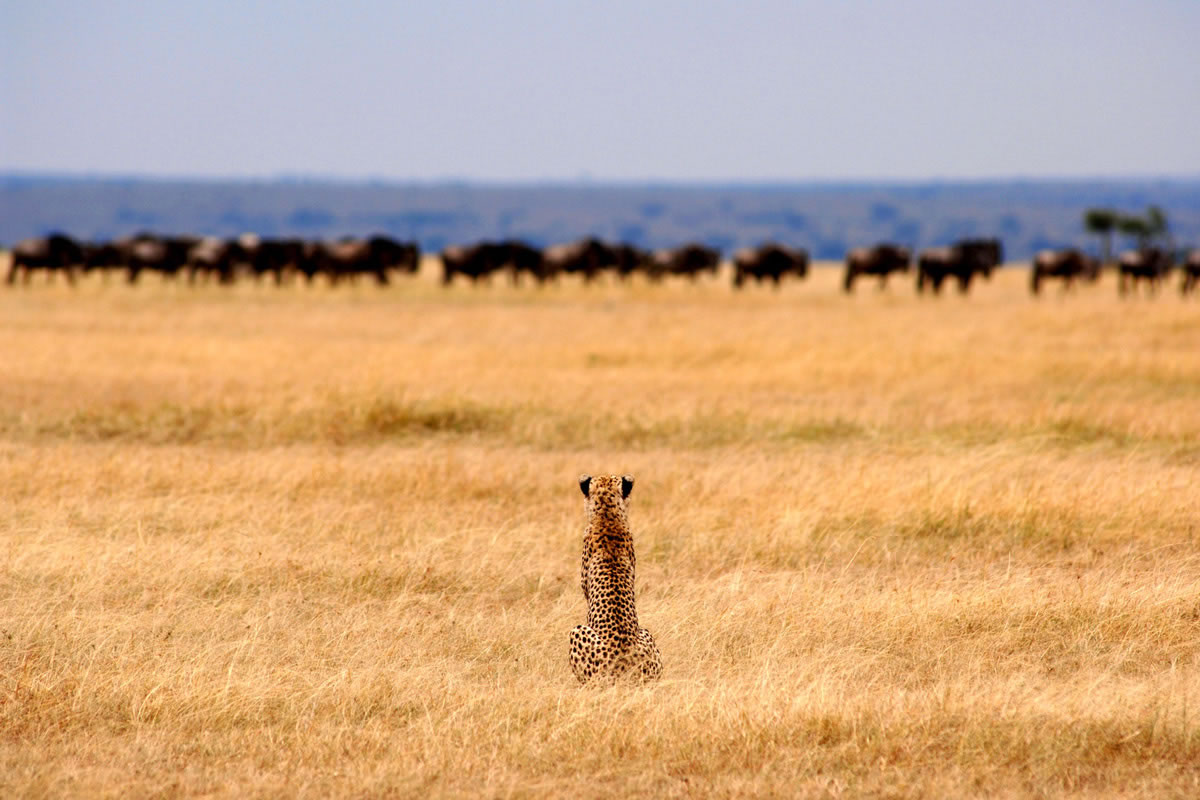
Plenty of predators keeping an eye on the proceedings. Serengeti Safari Camp
We have an unusual situation in the Serengeti where vast animal numbers are doing good by improving their habitat, which is more than can be said for us humans…
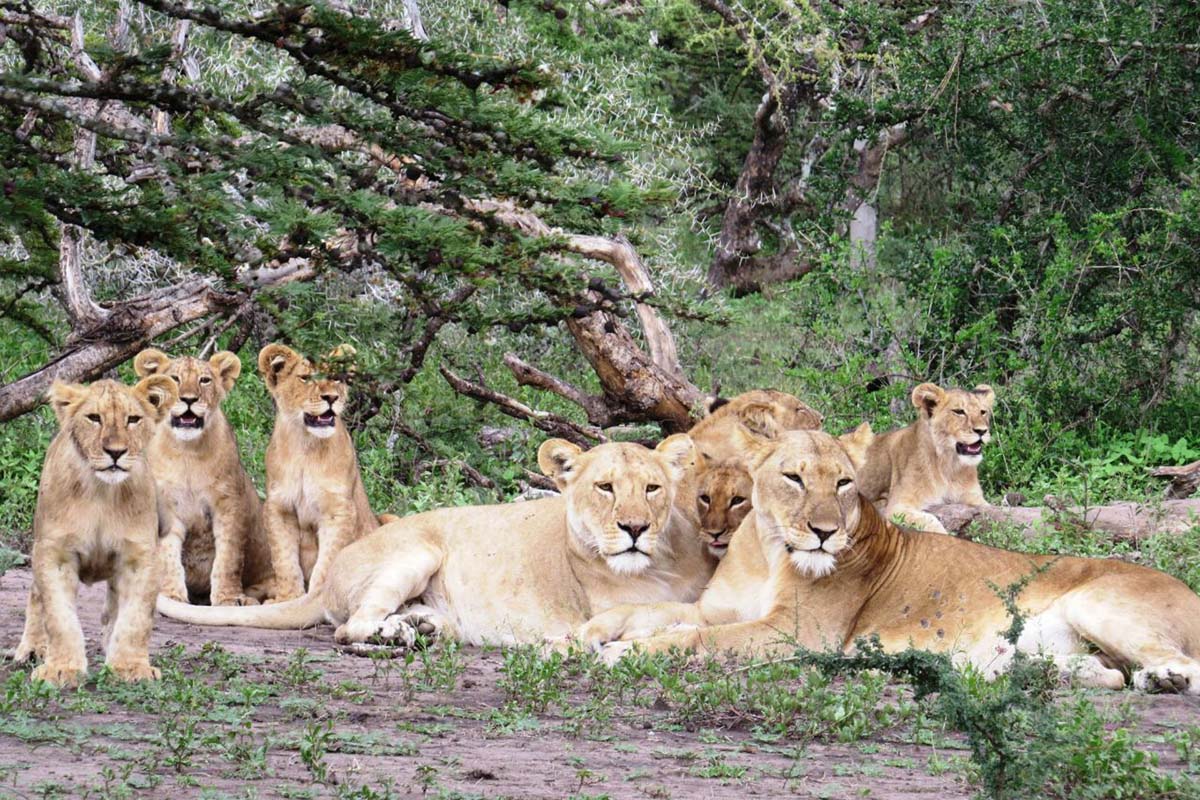
The Serengeti supports a veritable wealth of wildlife including large lion populations. Legendary Serengeti Migrational Camp
We have plenty more information on how to view this incredible wildlife spectacle on our wildebeest migration pages.
What next?
We would be delighted to help with planning a safari holiday that includes some time with the wildebeest migration. Our team of experts has travelled widely throughout Africa and the Indian Ocean and can offer expert advice. Do get in touch – chatting to people by phone or email is what we do best. We listen, we explain, we answer all sorts of questions even those you didn’t know to ask, and finally we make suggestions. If this is your first time to Africa or your twenty first, we have a team standing by to help make the planning easy and the journey the best ever. Please get in touch whatever stage you’re at.
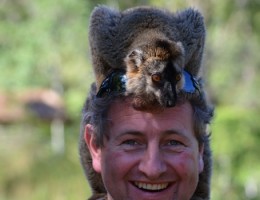
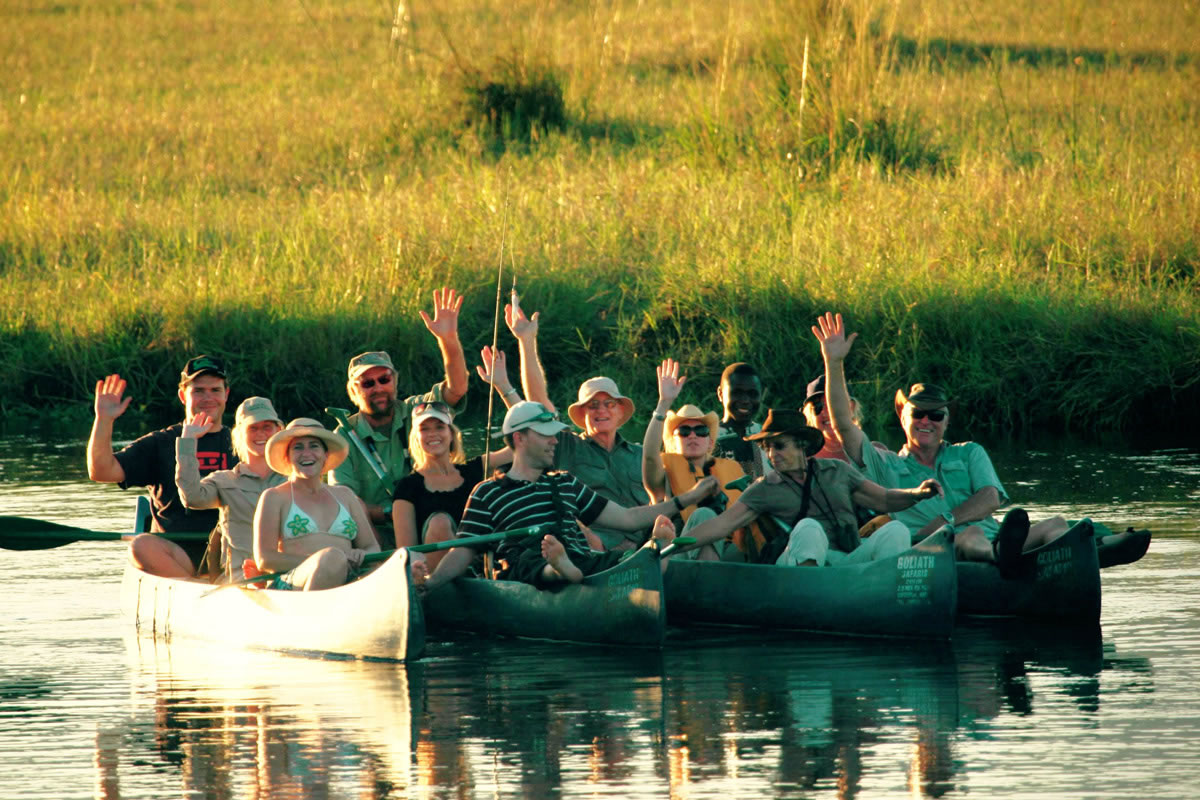
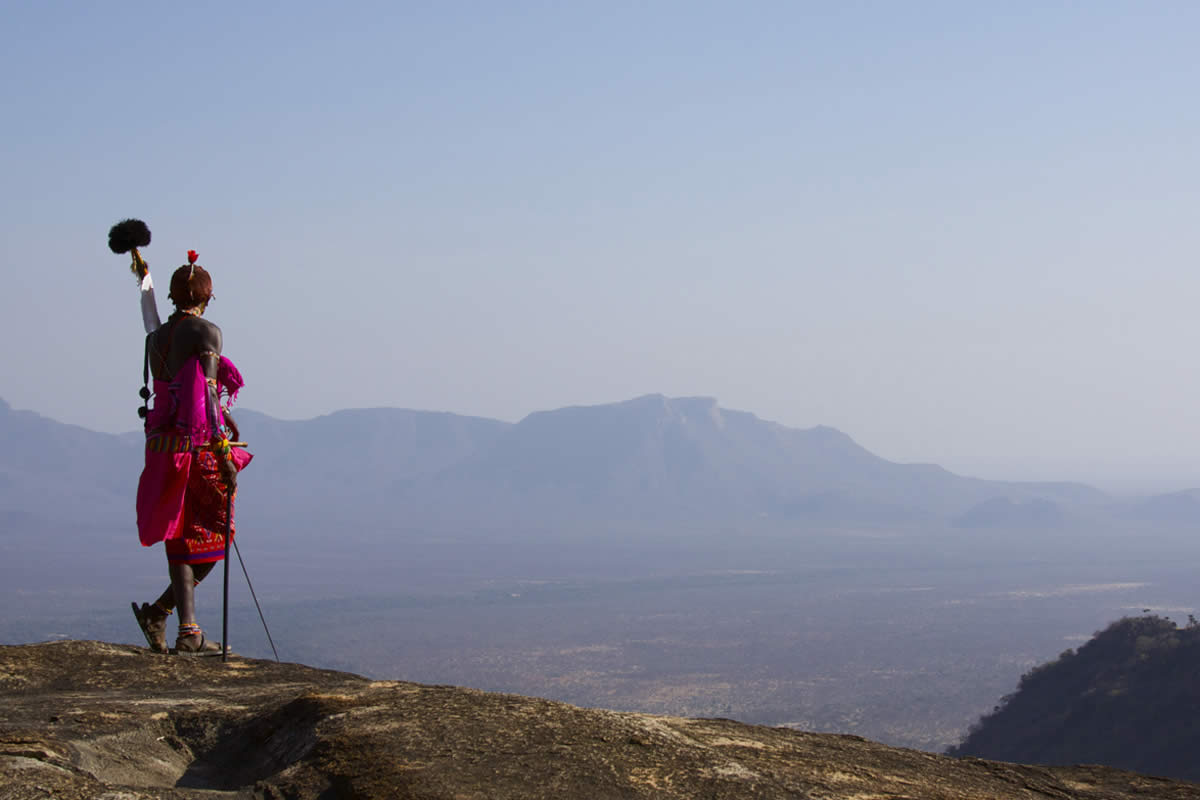
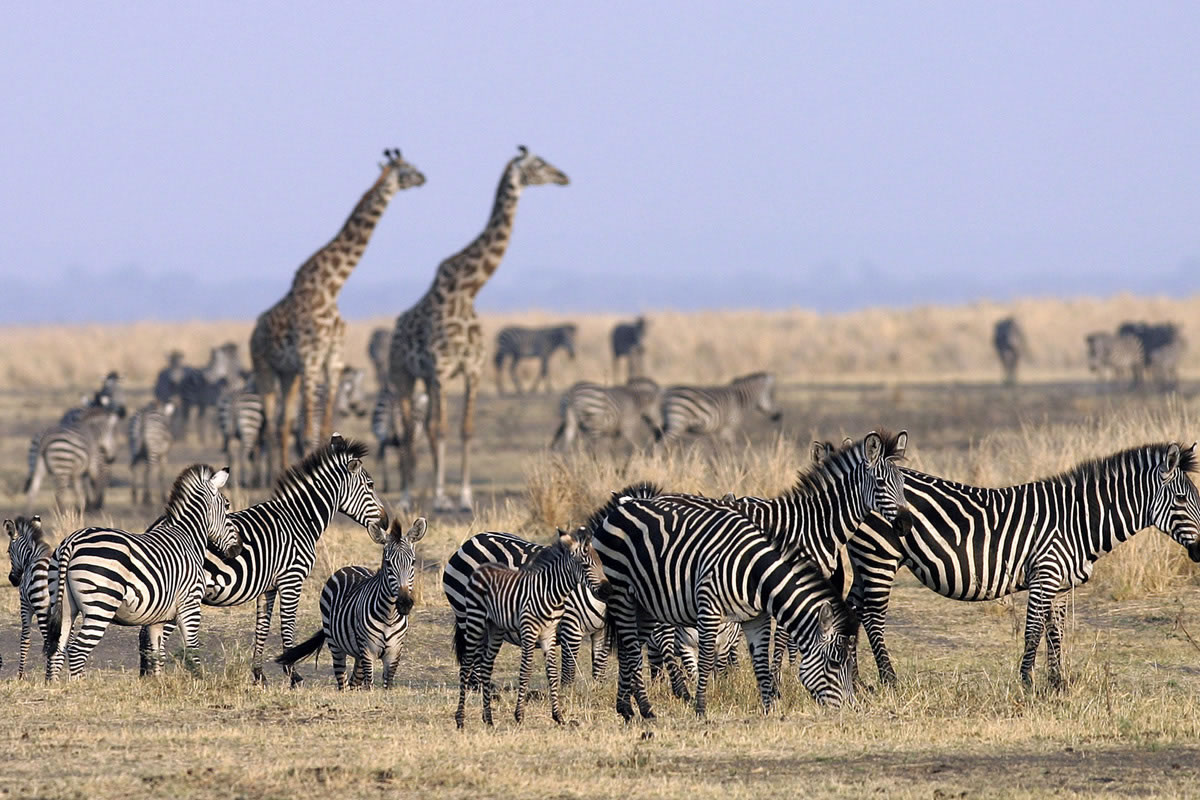

Leave a Reply